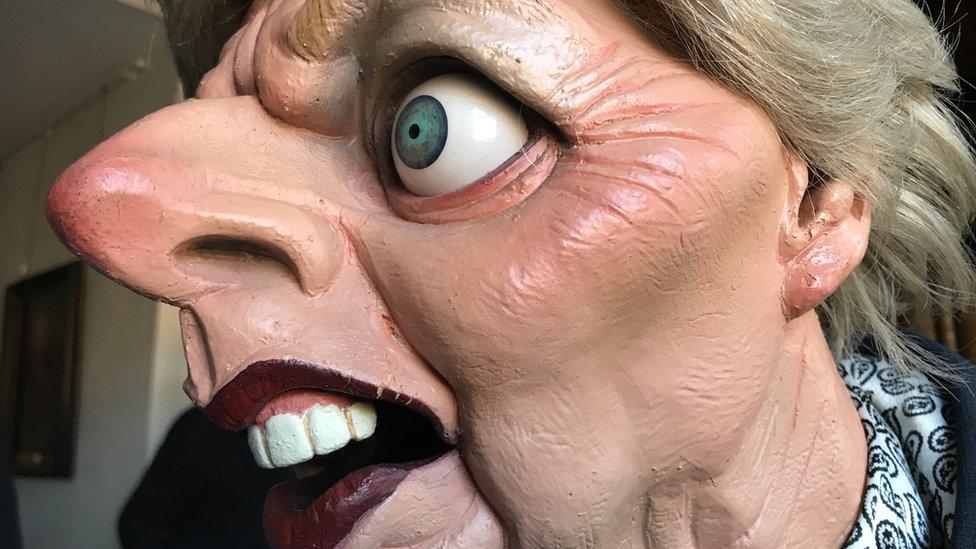Spitting Image archives go on show at Cambridge University Library
- Published
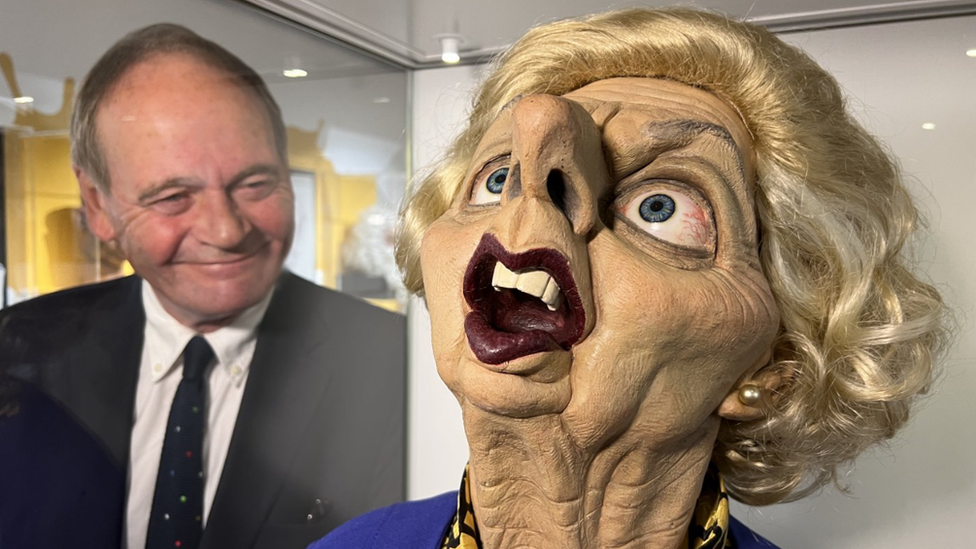
Series producer John Lloyd said the team was astonished the show attracted 15 million viewers at its peak
During a 12-year run in the 1980s and 1990s, Spitting Image lampooned political leaders, celebrities and royals. As an archive of puppets, scripts and artwork goes on display, why did the show become such a major part of British culture?
"We thought Spitting Image was going to be a niche thing that would disappear without a trace," said the show's co-producer John Lloyd. "To our astonishment it got 15 million viewers at its peak."
When Spitting Image first aired in 1984 nothing like it had been seen before.
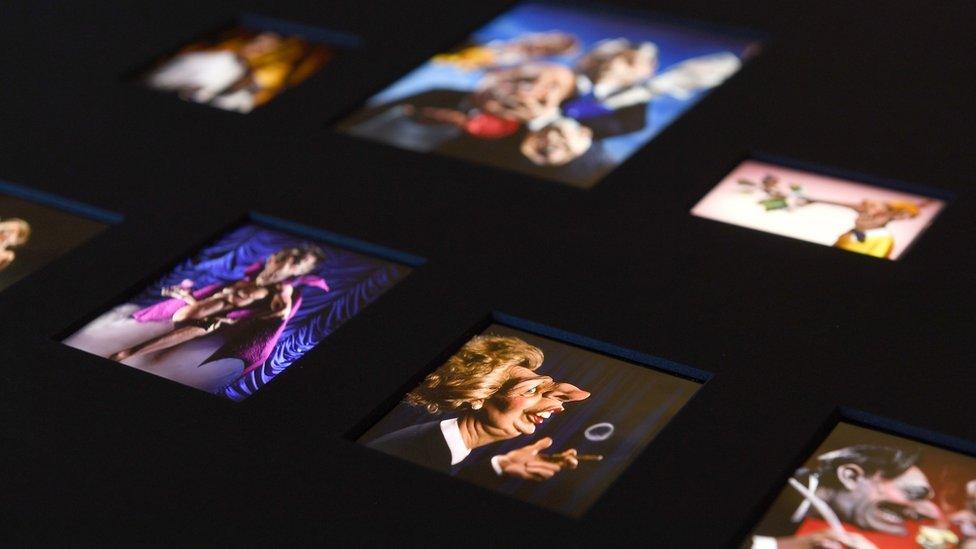
Puppets, scripts and artwork from the satirical show are poised to go on show to the public as part of an exhibition in Cambridge
The team behind the show, said Mr Lloyd, "lived on very little sleep and quite a lot of lager".
"We wanted to make it fresh as a daisy and as rude as we could possibly get away with.
"We became extraordinarily welded as a team."
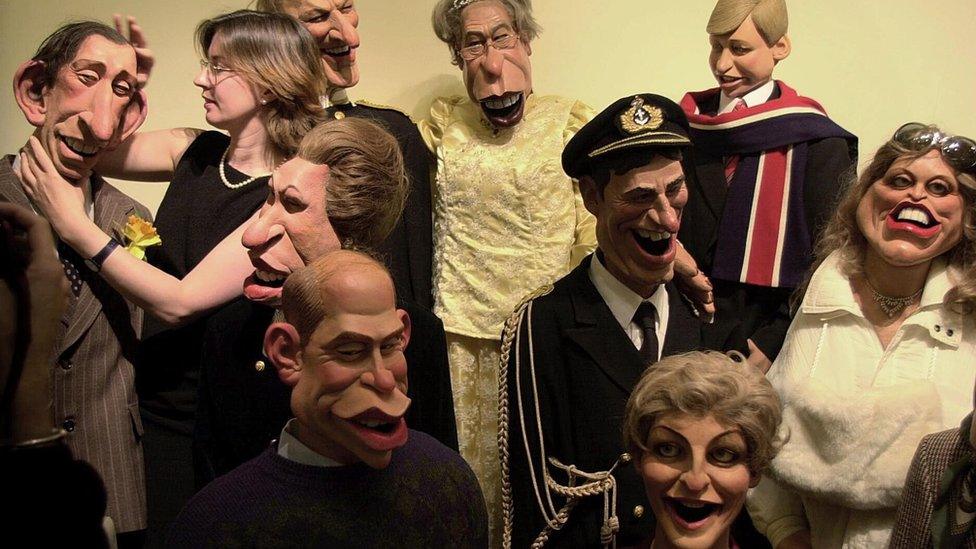
The original TV show parodied big names from the 1980s and 1990s, including members of the Royal Family
The show ran for 18 seasons until 1996 before being brought back by BritBox in 2020 for two further series.
Puppets, scripts and artwork from the satirical show are poised to go on show to the public as part of an exhibition in Cambridge.
The entire archive of Spitting Image material was donated to the Cambridge University Library in 2018 by the show's co-creator Roger Law under the government's Cultural Gifts Scheme.

The exhibition includes typed scripts from the popular television series
"It had a rawness and a freshness you rarely get in television," Mr Lloyd said.
The exhibition, which opens on Saturday at the Cambridge University Library, puts the Spitting Image phenomenon in context as it traces the development of satire from the 18th Century, with the likes of satirist James Gillray, right up to the present day.

The puppet of former USSR president, Mikhail Gorbachev, replaced his famous birthmark with a hammer and sickle
Curator Dr Chris Burgess said the original archive was catalogued and sorted by Mr Law's wife, Deidre.
The collection arrived at the university, he said, in a "really good state".
"One of the things that the archive allows us to do is move beyond the puppets to how the show was made, some of the complaints that came in, the people who worked on it, the writers, the puppet makers, the costume makers - as well as the scripts and how they constructed the jokes," he said.
"When Spitting Image first aired in 1984 there were only four channels and most people consumed satire that way or through newspapers.
"Now, with YouTube and Twitter [X] there are satirists sat at home creating their own."

The show made front page news in 1985 for "plunging to new depths of bad taste"
Dr Burgess said the material held by the library archives would be a valuable research resource for the future.
"The exhibition isn't the end, it isn't the history of Spitting Image, it's the start," he said.
"We want researchers to come and look at the collection and use it and explore what the show meant for culture in Britain in the 1980s."
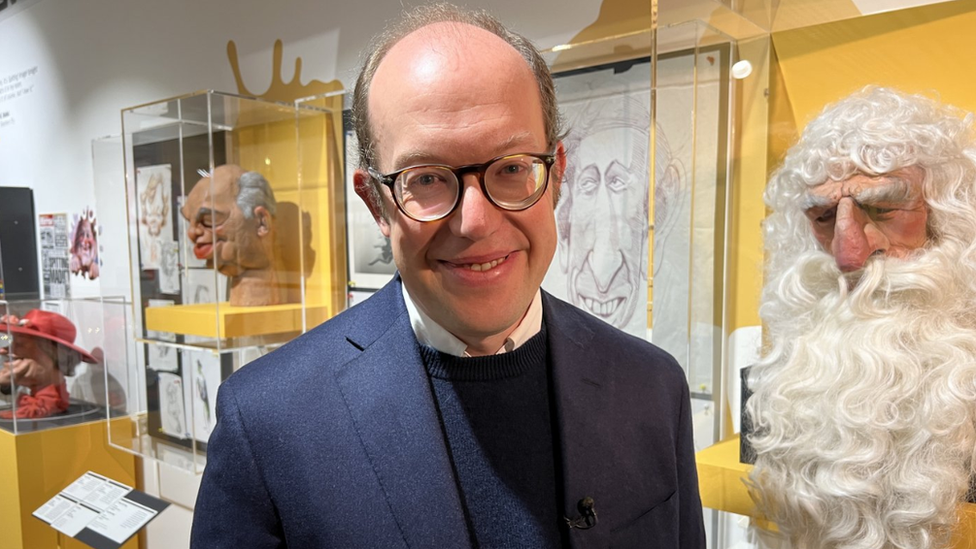
Dr Chris Burgess said the exhibition "takes a little bit of everything" from the library's Spitting Image archive
As for Mr Lloyd, he believes that as well as the jokes, Spitting Image played an important educational role at the time.
"You are educating people about the way the world is in a way that's not combative, it's funny," he said.
"It educated a whole generation of kids. You could name 10 members of the cabinet and four members of the shadow cabinet no problem.
"Could you do that today?"
Spitting Image: A Controversial History, external runs until February at the library in West Road, Cambridge, includes films, production photographs and even letters of complaint.

Follow East of England news on Facebook, external, Instagram, external and Twitter, external. Got a story? Email eastofenglandnews@bbc.co.uk or WhatsApp 0800 169 1830
Related topics
- Published24 January 2023
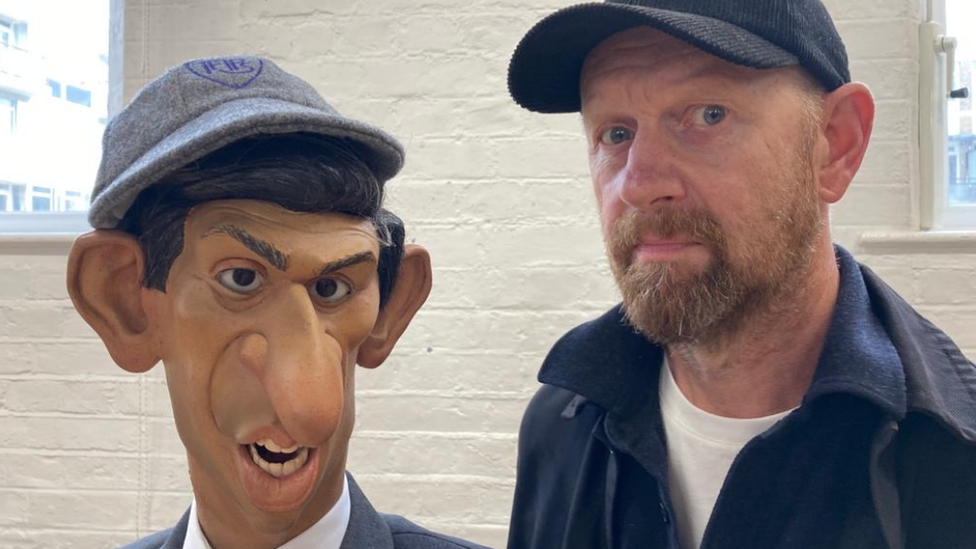
- Published21 June 2021
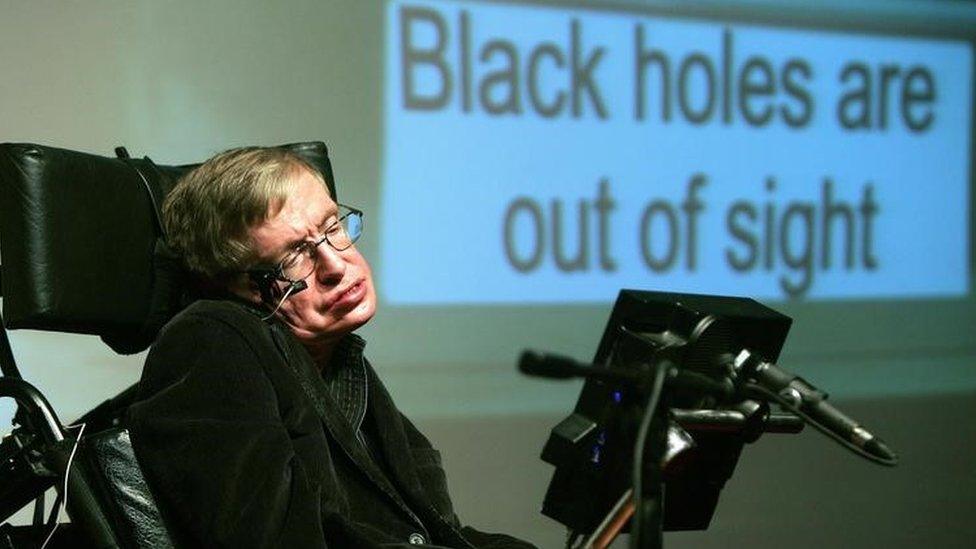
- Published14 November 2018
